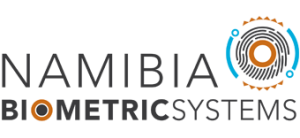Multimodal Biometrics Fusion using Multi-Traits
The articles on Multimodal biometrics have focused on data sources. The articles looked at multi-sensor fusion strategy, multi-algorithm strategies and multi-instance fusion. Multi-sensor fusion strategy utilises a single biometric trait captured using multiple sensors in order to extract diverse information from the image. While, multi-algorithm system uses only a single biometric capturing device (single sensor) to obtain raw data and then the raw biometric data is processed using multiple algorithms. It is clear that multi-algorithm systems are cheaper and more convenient for customers than multi-sensor as multi-algorithm systems do not require the use of additional biometric capturing devices. The customers are not required to interact with multiple capturing devices. However, multi-algorithm fusion requires the introduction of a new feature extractor and/or matcher modules which may increase the computational requirements of the system. Multi-instance fusion strategy utilises multiple instances of the same body trait such as the left and right index fingers of an individual may be used to verify an individual’s identity. Multi-instance fusion strategy overcome the limitations of both multi-sensor and multi-algorithms as Multi-instance does not introduce new sensors nor does it require the development of new feature extraction and matching algorithms.
In this article we introduce multi-traits fusion strategy. Multi-traits fusion strategy utilises multiple body trait to establish identity. For example, multi-traits biometric systems can utilize face and voice features to establish the identity of an individual. Uncorrected biometric characteristics are expected to result in better improvement in performance than correlated biometric traits. Voice and lip movement are example of correlated traits while fingerprint and iris are examples of uncorrelated biometric traits. The identification accuracy can be significantly improved by utilizing an increasing number of biometric characteristics. The number of biometric characteristics used in a specific application will be restricted by practical considerations such as the cost of deployment, enrollment time, throughput time, expected error rate, user habituation issues. Generally, the main limitations of multi-traits are cost and the development of appropriate user interfaces.
Other fields – Information fusion continue to be used in a diversity of scientific fields such as Land Mine detection. Several types of sensor technologies are being used to detect buried land mines. These include electromagnetic induction (EMI), ground penetrating radar (GPR), infra-red imaging (IR), quadrupole resonance (QR), chemical detectors and sensors of acoustically induced surface vibrations. In many cases, the data presented by these multiple sensors are concurrently used to improve the accuracy of land mine detection algorithms.
Our researchers within BRL at Namibia Biometric Systems will continue to examine the levels of fusion that are possible in a multimodal biometric system in the next article. In addition, our researchers at BRL would like to thank all the readers of the articles from Namibia, Africa and world wide.
More information on the implementation of biometrics based solutions can be requested from info@namibiabiometricsystems.com.
